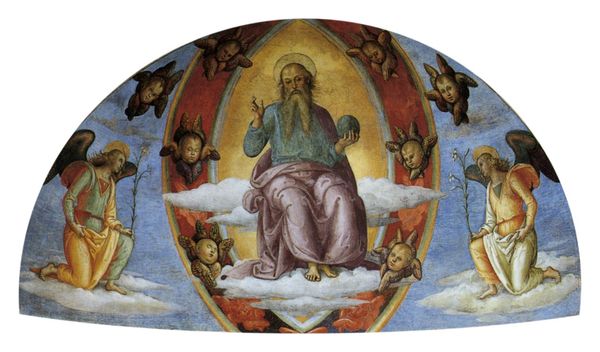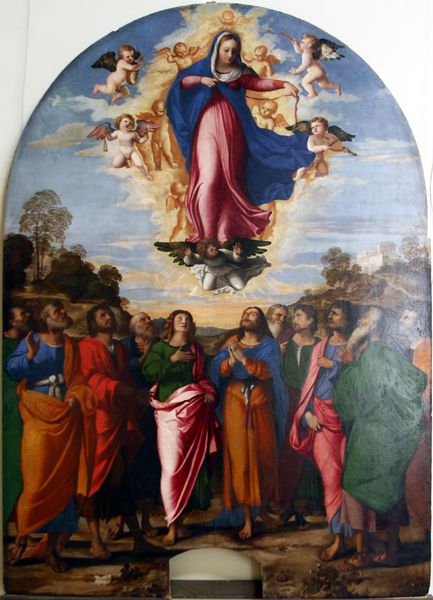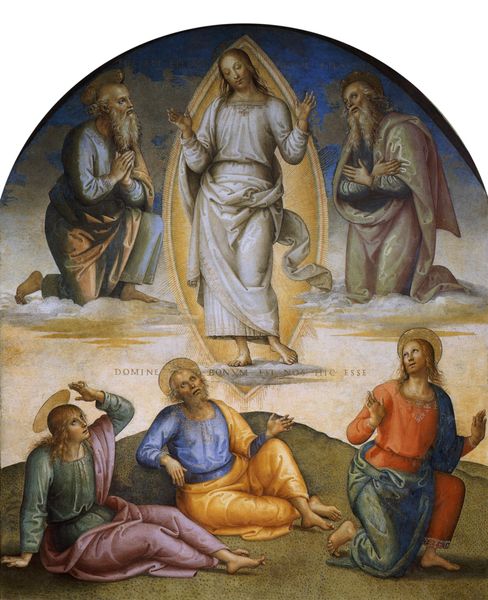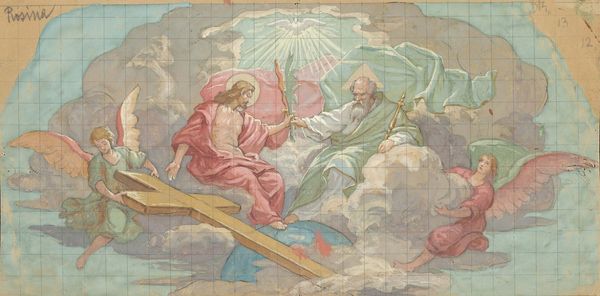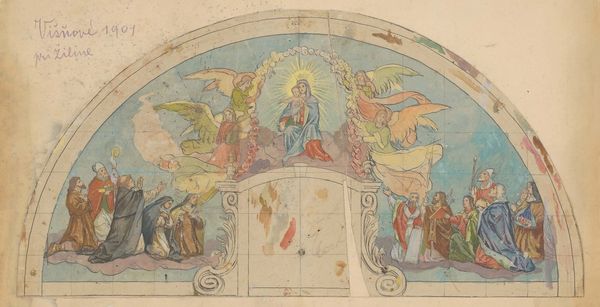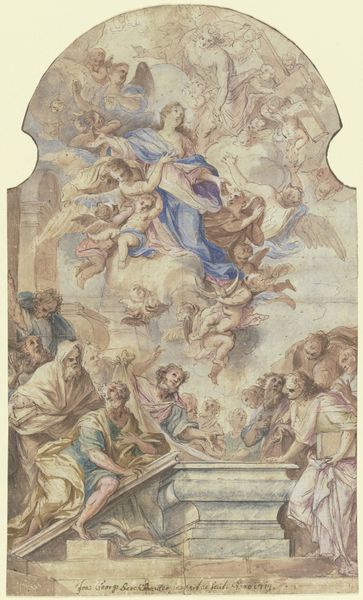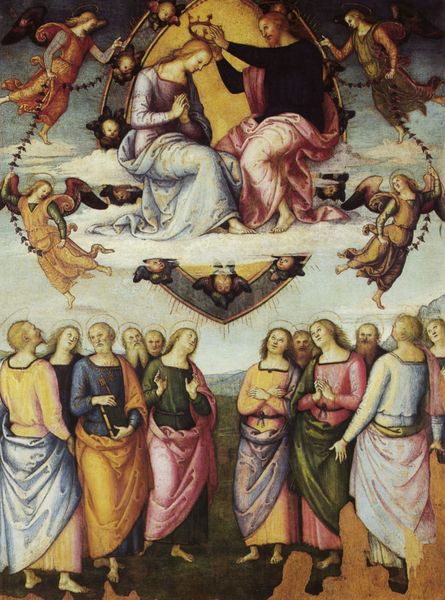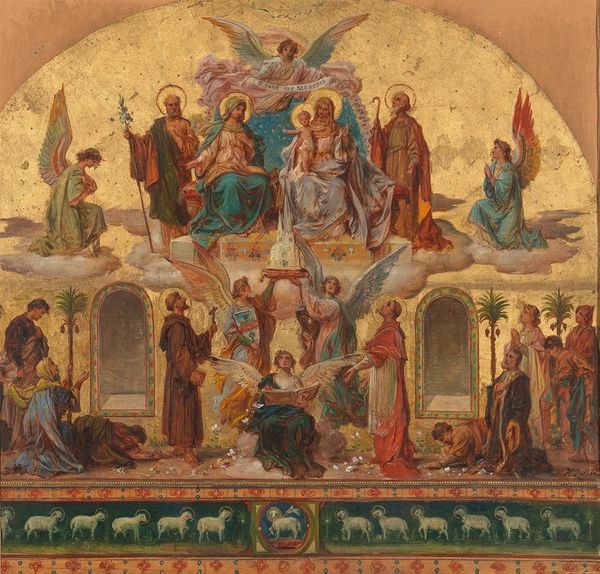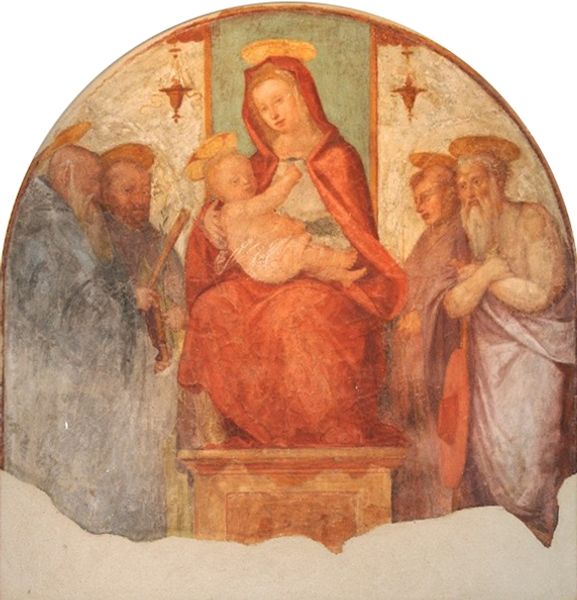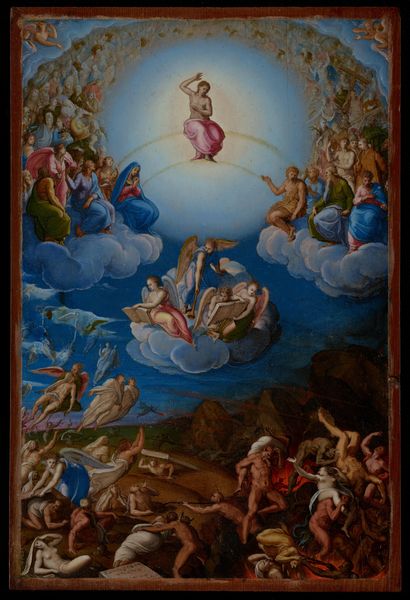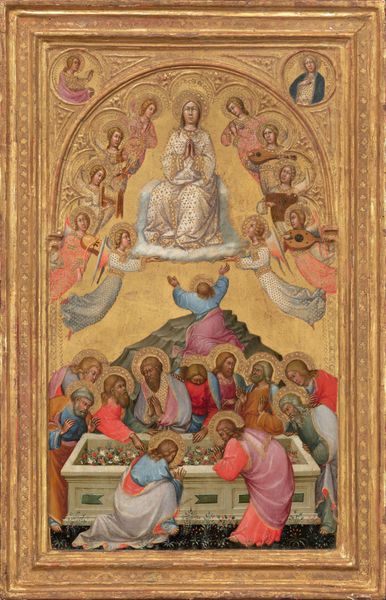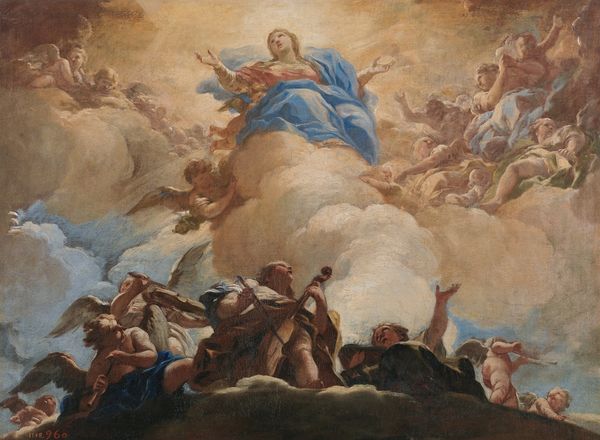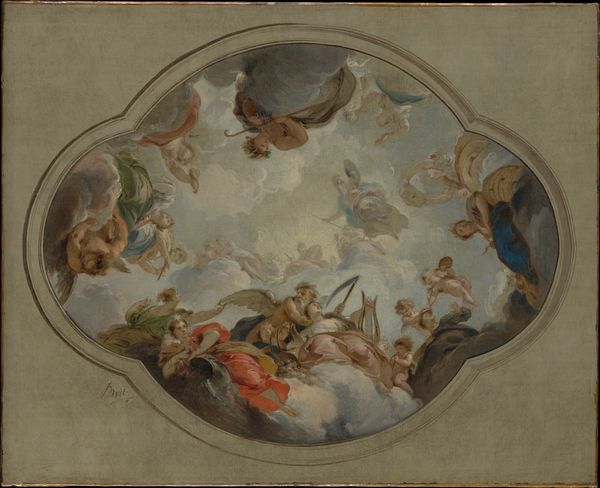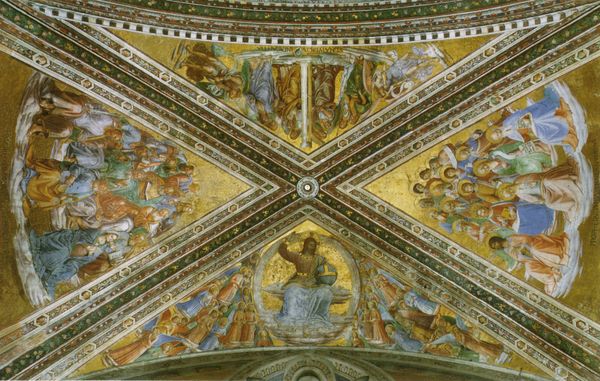
Copyright: Public Domain: Artvee
Curator: Jozef Hanula’s “The Last Judgement,” rendered in watercolor around 1902. What strikes you first about this vision? Editor: The muted palette and the unfinished feel, almost like a faded memory. It’s less a pronouncement of divine judgment and more an…exploration of a dream, perhaps? The architectural lines sketched below give it the aspect of an idea, a blueprint not fully realized. Curator: A blueprint for salvation or damnation, maybe. I'm fascinated by how Hanula, working within a traditional allegorical framework, subtly pushes against its constraints. Consider the composition, the central figure of Christ framed by swirling clouds and trumpeting angels, while at the margins, figures seem to flee or plead. The color wash reminds me of religious art painted on walls. Editor: Indeed, it begs us to ask: Judgment for whom, and according to whose rules? Is this heavenly reckoning a comforting promise or a looming threat? Given the period it was made, 1902, I think this vision of Judgement speaks to anxieties around class and social justice and is very timely as a result. What do you think about Hanula’s representation of women? Are they given fair visual consideration, in light of their presence or absence in positions of social and religious power in the painter’s world? Curator: Ah, now there’s the rub. Note the almost desperate posture of some figures as they seemingly strive to catch Christ’s attention. There is something melancholic here, even tragic. One almost has the sensation of people left behind; abandoned by history in some respect. In a dreamlike composition the historical underpainting seeps into what it could become. Editor: Right. A fascinating glimpse into the hopes and fears of a bygone era, rendered with surprising delicacy, or, some might argue, surprising delicacy given its heavy topic. The muted colours add to its wistful rather than dramatic tone. It softens a harsh story. Curator: It certainly leaves a lingering, ambiguous impression—something to ponder as we continue our tour. Editor: For sure. A great reminder that even eternal judgment is a human creation, deeply etched by culture, history and yes, hope.
Comments
No comments
Be the first to comment and join the conversation on the ultimate creative platform.
